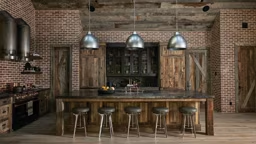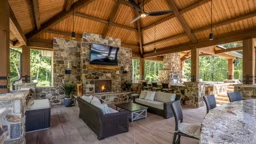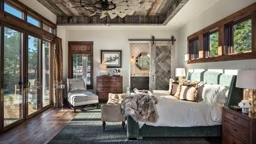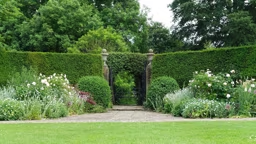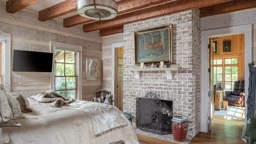
It’s only natural; when you build a gorgeous timber home, you’re going to want to show it off. Whether your idea of “showing off” means a cozy weekend get-together with your extended family or a lavish cocktail party for 100 guests, the bottom line remains the same: You’re certainly not the only one who’s going to be enjoying your new home. Given that guests are inevitable, it’s a good idea to keep this in mind when planning your floor plan.
Naturally, the degree to which accommodating others should affect your plans will depend on how strong your penchant for entertaining is — budding Martha Stewarts, for example, will want to pull out all the stops, while those who only expect visitors every now and then may just consider only a few guest-friendly modifications. Before you unfurl the welcome mat (in fact, before you even buy the welcome mat), check out our tips for making each space in your house a crowd-pleaser.
The Kitchen
The kitchen is the undisputed new heart of the home, and this is especially apparent when the house starts filling with revelers. So how do you design a kitchen that’s both functional and party-friendly? Contrary to popular belief, it’s not about square footage, but smart design.
“Make sure there’s plenty of seating in the kitchen and adjoining areas,” advises Bonnie Pickartz, co-owner of Goshen Timber Frames. An island with barstools is the most popular way to accomplish this, while also helping to set boundaries for an open kitchen.
“An island sort of acts as a fence,” points out Dwight Smith, owner of Hamill Creek Timber Homes. “If you have a bar on one side that’s a little bit more elevated than the counter, it also helps conceal dishes and other kitchen work.”
A small dining nook also can promote conversation between the cook and guests, with the added bonus of adding architectural interest to your home’s design. When laying out your kitchen, you’ll also want to consider how to make serving and storing food more convenient. In the case of the former, this could mean having dual ovens, or a small wet bar in an adjoining alcove, which “takes beverage prep out of the main part of the kitchen so it’s not in the way,” says Bonnie.
As far as storage goes, a walk-in pantry is the gold standard, but, says Dwight, “A built-in cupboard that’s accessible from a hallway is something you can put in easily if you have less space to work with.”
The Common Areas
While timber homes’ open great rooms naturally lend themselves to socializing, no guest wants to walk in the front door and suddenly find themselves in the middle of the party, their entrance the proverbial record-scratch that grinds things to a halt. Therefore, it’s important to set the stage with a foyer: “Lots of people think you need to walk into a house and immediately be wowed by the timbers, but if you walk into a smaller space first, it gives you a sense of coziness,” says Bonnie.
Still, Dwight advises, don’t hold everything back: “It’s nice to let guests see glimpses of some of the spectacular aspects of the home to keep inviting them in.”
If, at the end of the night, you’re pooped, but the party’s still going? Because the wood beams and vast ceilings in timber homes can be notoriously good sound conductors, plan ahead with good design and materials. Keep bedrooms in a separate wing from common areas, suggests Bonnie, and be sure to have plenty of insulation between floors and ceilings, particularly if you have an open loft. Dwight adds that vibration-minimizing drywall, which Hamill Creek uses in its homes, also is an excellent way to keep sound from invading the serenity of your bedrooms.
The Outdoor Space
These days, entertaining isn’t confined to the four walls of a home: as outdoor rooms grow in popularity, so does outdoor entertaining. As Bonnie notes, “Any time you add outdoor space, it makes your house live larger.” When creating an enchanting outdoor room, the general rule is that the more creative you can get, the better. For instance, Bonnie suggests placing a sunroom or screened-in porch with French doors adjacent to your dining room so that, in warm weather, the doors can be opened to extend the space.
Another cozy and creative option, suggests Dwight, is to make use of a great-room fireplace on an exterior wall to create a dual-sided or double hearth that also serves an outdoor space. “The ambiance and warmth of a fireplace can really increase the time you spend outdoors,” he notes. For easy entertaining access, be sure to locate at least one entry to your outdoor space off the kitchen or dining room.
The Guest Bedrooms
If, after the last champagne cork has been popped, you’ll have a few guests staying over, they’ll undoubtedly appreciate thoughtfully designed guest quarters. In addition to providing a full, ensuite guest bathroom, says Dwight, “Put the guest room in a part of the home that’s separate from the rest of the family so guests don’t feel like they’re intruding.” If you know you’ll be hosting friends and relatives with kids, bunkrooms are always a hit, but don’t locate them too far away from parents’ rooms.
“We’ve done several vacation homes for multiple families where each couple had a room that was their private space, along with an adjacent bunk room for the children,” Bonnie says. Turning a basement into a mini apartment or rec room can be a boon for teenagers, she adds, as it allows them to entertain themselves.
When all is said and done, the only person who really has to love your floor plan is you. Still, making a few minor tweaks with your eventual guests in mind will go a long way in ensuring a constant flurry of feet over that new welcome mat.





